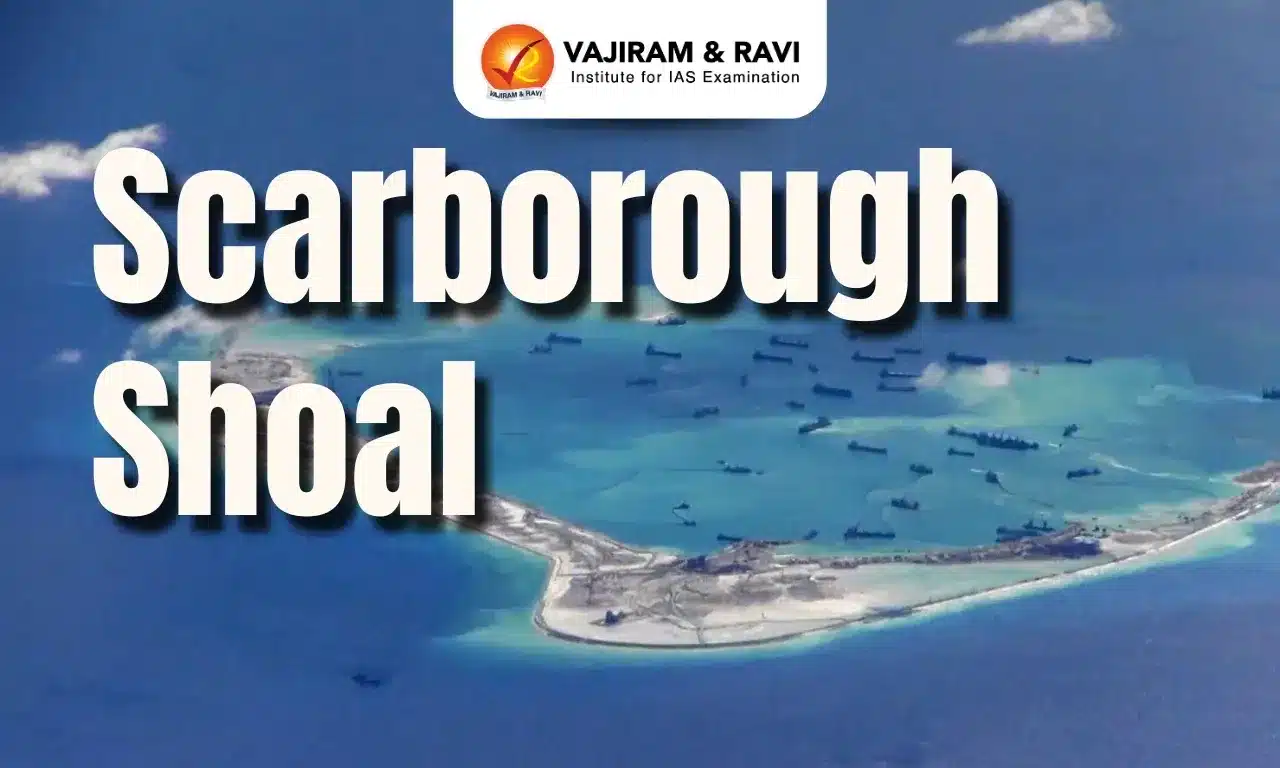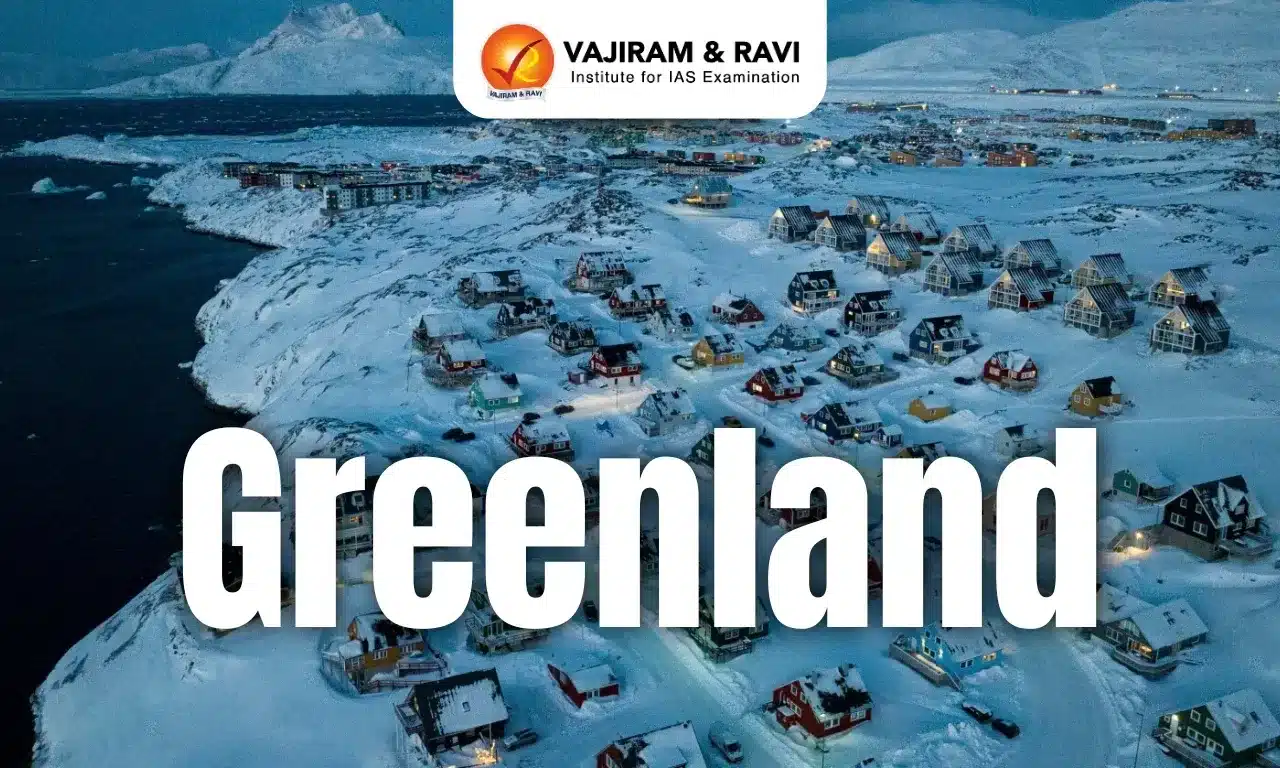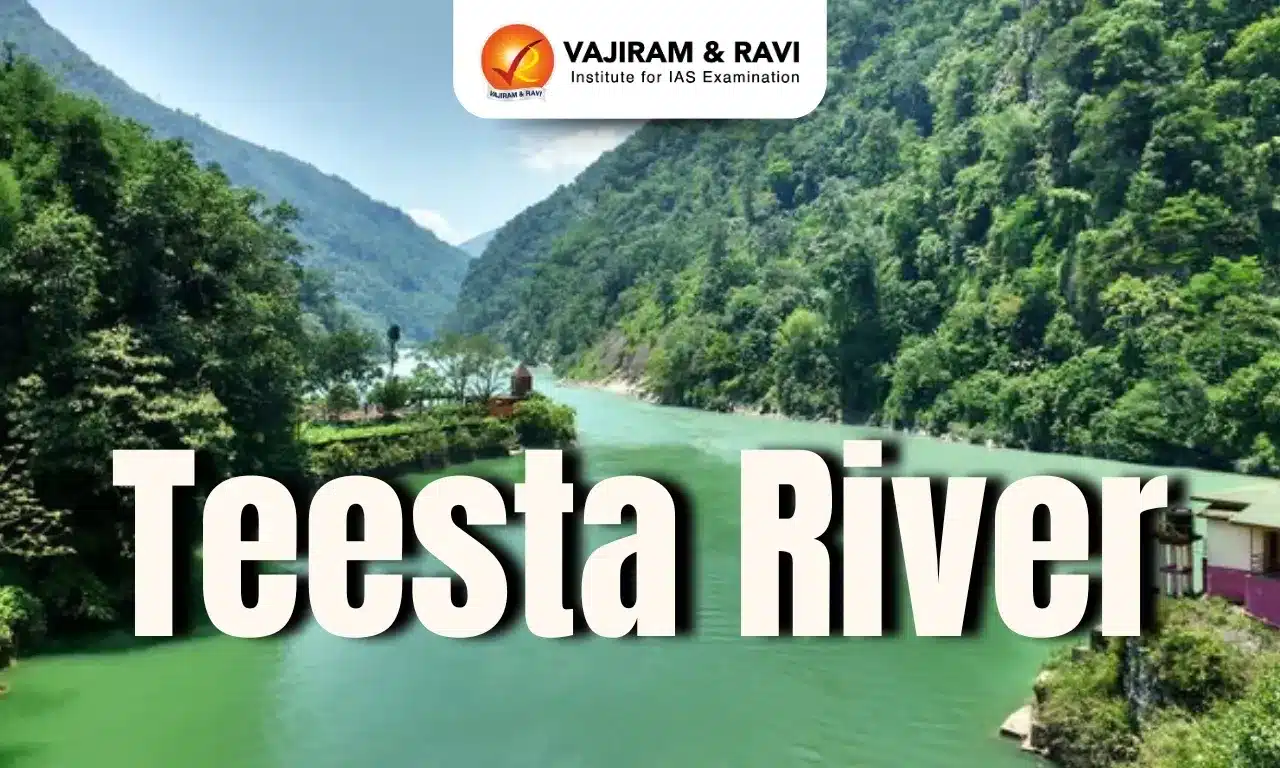Scarborough Shoal Latest News
China deployed two long-range H-6 bombers around the Scarborough Shoal recently, in Beijing's latest move to assert sovereignty over the hotly disputed atoll in the South China Sea.
About Scarborough Shoal
- The Scarborough Shoal (also known in English as the Scarborough Reef) is an oceanic coral atoll that developed on top of a seamount into a triangle shape in the eastern part of the South China Sea.
- It is located some 220 kilometers west of the Philippines’ Island of Luzon.
- It is the largest atoll in the South China Sea, submerged at high tide with few rocks above sea level.
- This atoll extends 18 km along its northwest-southeast axis and reaches 10 km along its northeast-southwest axis.
- The deep waters around the shoal make it a productive fishing area, rich in marine life, and the lagoon also contains many commercially valuable shellfish and sea cucumbers.
- The shoal is the source of an ongoing and, so far, unresolved dispute between the People’s Republic of China and the Philippines, with both countries claiming that the shoal lies within their territory and saying they have exclusive rights to access its waters.
- There are no structures built on Scarborough Shoal, but the feature is effectively controlled by China, which has maintained a constant coast guard presence at the feature since 2012.
- China, which now refers to the shoal as Huangyan Island, makes a historical claim to the area, stating that they can trace their ownership of the area back to the Yuan Dynasty of the 1200s.
- The Philippines claim the area on the basis of geography, as it is much closer to the Philippines’ main island of Luzon, which contains the capital, Manila, but lies over 500 miles from China.
- It is considered within the Philippines’ 200-nautical mile exclusive economic zone, based on the 1982 United Nations Convention on the Law of the Sea (UNCLOS).
Scarborough Shoal FAQs
Q1. What country owns Scarborough Shoal?
Ans. Scarborough Shoal is a disputed territory in the South China Sea, claimed by both China and the Philippines.
Q2. Where is Scarborough Shoal located?
Ans. South China Sea
Q3. How large is Scarborough Shoal?
Ans. 18 km by 10 km
Source: NDTV







